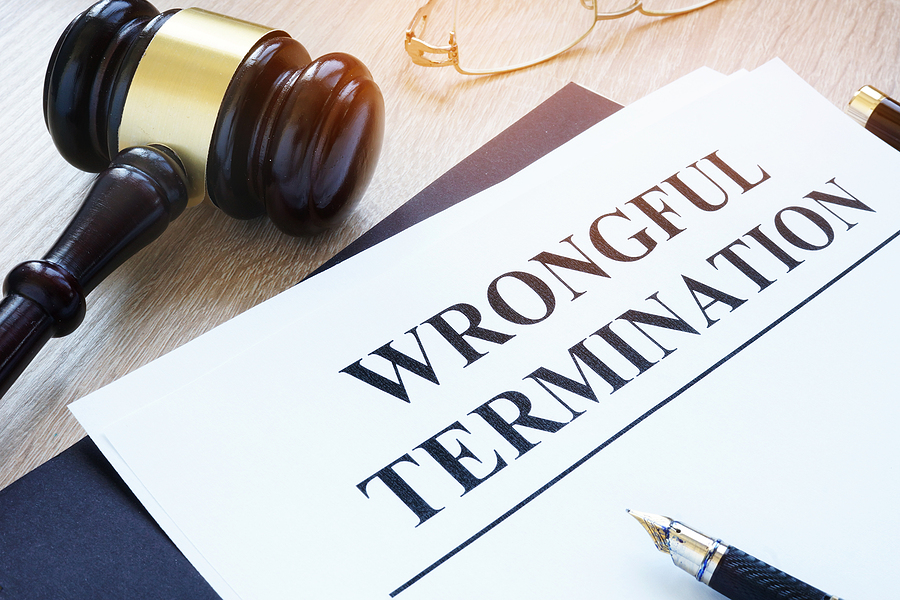Losing a job can be stressful under any circumstances, but being terminated for illegal or unfair reasons can be particularly damaging. Wrongful termination occurs when an employee is fired in violation of federal, state, or local laws, or when the firing breaches a contract or company policy.
Understanding your rights, potential remedies, and how to respond is critical for protecting yourself and pursuing justice.
Understanding Wrongful Termination
Wrongful termination is not simply being fired—it specifically refers to situations where the dismissal violates legal protections or contractual agreements. Common examples include:
- Discrimination: Termination based on race, gender, age, religion, disability, national origin, or other protected characteristics is illegal under federal law, including Title VII of the Civil Rights Act, the Age Discrimination in Employment Act, and the Americans with Disabilities Act.
- Retaliation: Employers cannot legally fire employees for reporting workplace violations, such as harassment, safety violations, or wage violations, or for participating in investigations or whistleblowing.
- Violation of Contract: If an employment contract, union agreement, or company policy guarantees job security or outlines specific termination procedures, firing an employee outside these terms can constitute wrongful termination.
- Constructive Discharge: In some cases, creating a hostile work environment that forces an employee to resign may be considered wrongful termination. This occurs when the employer’s conduct effectively leaves the employee with no reasonable choice but to quit.
Signs You May Have Been Wrongfully Terminated
Recognizing the signs of wrongful termination is the first step in addressing the situation. Common indicators include:
- Immediate termination without a valid reason or explanation.
- Disparate treatment compared to other employees in similar roles or circumstances.
- Termination following complaints about discrimination, harassment, safety concerns, or wage issues.
- Employer violating procedures outlined in contracts, handbooks, or union agreements.
Documenting these circumstances carefully can strengthen your case if you decide to pursue legal action. Keeping detailed records of communications, performance reviews, and company policies is essential.
Steps to Take After a Termination
If you believe you were wrongfully terminated, acting promptly can protect your rights. Key steps include:
- Request a Written Explanation: Ask your employer for a clear reason for your termination in writing. This can be valuable evidence if legal action is necessary.
- Review Employment Documents: Examine your employment contract, company handbook, and any applicable union agreements to determine whether the termination violated policies or contractual obligations.
- Document Everything: Keep records of emails, performance reviews, meeting notes, and any relevant interactions leading up to your termination. Detailed documentation strengthens your case.
- Consult an Employment Attorney: Legal professionals specializing in employment law can assess your situation, advise on potential claims, and guide you through filing complaints or lawsuits.
- File a Complaint: Depending on the nature of the termination, you may file complaints with agencies such as the Equal Employment Opportunity Commission (EEOC), Department of Labor, or state labor boards. These agencies investigate claims and can pursue remedies on your behalf
Potential Remedies for Wrongful Termination
Employees who successfully prove wrongful termination may be entitled to several remedies, including:
- Reinstatement: Returning to the former position if the employer is legally required to reinstate the employee.
- Back Pay: Compensation for lost wages from the date of termination until the resolution of the case.
- Compensatory Damages: Payments for emotional distress, reputational harm, or other non-economic losses resulting from the termination.
- Punitive Damages: In cases of egregious conduct, courts may award punitive damages to punish the employer and deter similar behavior.
- Settlement Agreements: Many cases are resolved through negotiation, with employers offering monetary compensation or other remedies to avoid lengthy litigation.
Common Challenges in Proving Wrongful Termination
Proving wrongful termination can be complex. Employers often cite performance issues, business needs, or other reasons to justify firing, making it necessary for employees to demonstrate that the termination was motivated by illegal or improper reasons.
As Travis Studdard,Georgia Veterans Disability Benefits Attorneys of Perkins Studdard, says, “Timing and documentation are critical. Evidence showing retaliation, discrimination, or contract violations must be collected and presented clearly. Witness statements, emails, performance reviews, and other records can play a decisive role.”
State laws also vary, and some states follow “at-will” employment rules, allowing employers to terminate employees without cause. However, even in at-will states, termination cannot violate federal anti-discrimination laws, retaliation protections, or contractual obligations.
Tips for Protecting Yourself
Protecting yourself after a termination—or even while still employed—requires a proactive and strategic approach. Start by maintaining professional conduct at all times, even in stressful or emotional situations. Staying composed and respectful helps preserve your credibility and can strengthen your position if a legal dispute arises.
Make sure you know your rights under federal, state, and local employment laws. This includes protections against discrimination, retaliation, wage violations, and violations of workplace safety standards. Understanding your rights allows you to recognize when your employer may be acting unlawfully and gives you a basis for taking action.
Document everything meticulously. Keep detailed records of workplace interactions, performance feedback, emails, meeting notes, and any incidents of harassment, discrimination, or retaliation. Thorough documentation is often the key evidence that supports a wrongful termination claim or strengthens your case in negotiations.
Finally, consult an employment attorney before signing any separation agreement, severance package, or settlement. Many agreements contain clauses that waive rights to pursue legal claims or limit future remedies. Legal guidance ensures that you fully understand your options, protects your rights, and helps you make informed decisions that won’t compromise your ability to seek justice.
At-Will Employment vs. Contractual Rights
Many employees assume that all termination decisions are automatically wrongful, but the distinction between at-will employment and contractual employment is critical. In most U.S. states, at-will employment allows employers to terminate employees for almost any reason—or no reason at all—so long as it doesn’t violate federal or state anti-discrimination laws.
However, employees who work under a formal contract, union agreement, or company policy that outlines termination procedures have additional protections. Violating these contractual obligations can be considered wrongful termination. Understanding whether your employment falls under at-will or contractual protections is key to evaluating the strength of a wrongful termination claim.
The Role of Internal Complaints and HR Documentation
Before pursuing legal action, it is often important to exhaust internal remedies. Filing formal complaints with human resources (HR) or documenting incidents within the company can provide a paper trail that demonstrates your attempts to resolve workplace issues responsibly.
HR documentation can also be critical evidence in a wrongful termination case. Notes from meetings, written warnings, or performance improvement plans can either support the employer’s claims or highlight inconsistencies in their stated reasons for termination. Keeping copies of all communications and reporting incidents through proper channels strengthens your position if legal action becomes necessary.
Statutes of Limitations and Timing Considerations
Time is a crucial factor when pursuing a wrongful termination claim. Statutes of limitations dictate how long you have to file a claim with administrative agencies or in court, and these deadlines vary depending on the type of claim and the state in which you are filing.
For example, discrimination claims under federal law often require filing with the EEOC within 180 days of the termination, while retaliation claims or contract disputes may have different deadlines. Delays in filing can result in forfeiting the right to pursue a claim, so it’s essential to act promptly. Consulting an attorney immediately after termination ensures that you meet all deadlines and preserve your legal options.
Final Thoughts
Wrongful termination can have serious financial, emotional, and professional consequences, but understanding your rights and taking proactive steps can make a significant difference. Recognizing the signs of illegal termination, documenting your case, and seeking professional guidance early can help protect your interests and provide avenues for compensation or reinstatement.
While the process can be challenging, employees who act strategically and assert their legal protections are in a stronger position to hold employers accountable and ensure fair treatment in the workplace.






